
Georgetown College published its first printed catalog in 1851. Prior to that, prospectuses were produced as a convenient way of communicating the aims, curriculum, costs, and rules of the institution to parents of potential students. By studying these intermittently published, one to four page printed pamphlets, researchers can trace the development of the College through its early decades, including its struggles to become viable, its expansion as it became more financially stable and confident in its ability to survive and prosper, and its choices in how best to market itself to students.
In this online exhibit, scans of the prospectuses are accompanied by brief notes from the University Archivist on select points of interest.
Prospectus of January 1, 1798, page 1
Our first prospectus was published towards the end of the tenure of William Louis Dubourg, S.S., Georgetown's third president. Fr. Dubourg was intent on moving beyond the struggles of raising money and recruiting faculty that had characterized Georgetown's first decade and on transforming the school into an elite college. As well as adopting a College seal, significantly increasing faculty size by hiring sixteen new teachers, enlarging the curriculum by adding classes in history, moral philosophy, music, dancing and drawing, and mandating uniforms for students (blue coats, with red waistcoats for Sundays and special occasions), he produced Georgetown’s first prospectus. This was printed in English, Spanish and French and use of these languages reflects the fact that Georgetown, even in the 1790s, attracted international students. At that time, they mostly came from Caribbean countries.
The teaching of English, French and Spanish is referenced in sections 7 and 8, after mention of the study of the dead languages (Greek and Latin) in section 6: The English and French languages come next, and are encouraged in both theory and daily practice, no pains being spared in training up the foreigners to a correct and familiar use of the former, and the natives to that of the latter . . . There is already provision made for the teaching of the Spanish language, which, next to the English and the French, is considered as the most valuable in a country, naturally connected by the double ties of neighborhood and trade with the Spanish territories. The United States at this time was bordered to the south by East Florida and West Florida and to the west by the Colony of Louisiana, all under the control of Spain.
This prospectus contains examples of the long or medial s, which resembles the letter f on first inspection. The first line alone contains three examples, in the words first, instruction, and six. The long s began to disappear from new typefaces in the mid-1790s and is not seen in succeeding prospectuses.
Prospectus [1809]
The 1798 prospectus situates Georgetown in the State of Maryland. In 1802, Washington, D.C., was incorporated by Congress and this change is reflected in the location given across the top of the 1809 version, George-Town College, In the District of Columbia.
By 1809, the College was entering a period of decline, with enrollments dropping and a resultant decrease in revenue from tuition. Concern for the financial health of the College is perhaps indicated by the inclusion of the fee schedule in section I; in Dubourg's 1798 prospectus, the fees are found toward the bottom of the second page.
Section 7 contains perhaps the first reference to the concept of summer school at Georgetown: The idle, for punishment, are confined in the vacation to certain extraordinary hours of study during play time, in order to repair what they have neglected to learn in schools ; therefore if they are found deficient in the last and most important examination of the year, before the August vacation, they will not be allowed to go home during that time.
The second to last paragraph includes the statement that the College is a large building, capable of lodging two hundred persons conveniently. This is a reference to the completion of the interior of the North Building, which we know today as Old North. The land on which Old North sits was bought in 1792 and work on the building's exterior was completed by 1795. Finding money to pay for the construction work was difficult, however. Records in the Archives even show that, at one point, building expenses were paid in beef from cows raised on campus rather than in cash. And there was initially little money available to fund significant work on the building's interior. As a result, only the third floor was finished and in regular use until 1809, when an anonymous gift of $400 was received to fund completion of the other floors.
Prospectus of May 1, 1814, page 1
The abbreviation: A.M.D.G. appears at top of this prospectus. It stands for the Latin phrase: Ad majorem Dei gloriam which is the motto of the Jesuit Order and translates as "For the greater glory of God." This abbreviation is the first direct reference in any of the prospectuses to a connection between Georgetown and the Jesuit Order. The Order did not exist when Georgetown College was founded as it had been suppressed by Pope Clement XIV in 1773. However, Georgetown's founder John Carroll and the College's early presidents (with the exception of William Dubourg who was a Sulpician) were former Jesuits. The Order survived only in Russia where Catherine the Great refused to endorse the brief of suppression as she valued the work of Jesuit-run Colleges within the borders of her empire. Former Jesuits in the United States were given permission to affiliate with Order in Russia beginning in 1805 and the Order was fully restored by Pope Pius VII on August 7, 1814, a move perhaps anticipated by President John Grassi when he added the Jesuit motto to his 1814 prospectus.
The Jesuit motto is followed by the phrase: Georgetown College, District of Columbia, Under the Direction of the Incorporated Catholic Clergy of Maryland. The reference to the Incorporated Catholic Clergy, which also appears in the 1809 prospectus, speaks indirectly to Georgetown's connections to the Jesuit Order. The Incorporated Catholic Clergy was a body consisting of former Jesuits working under the direction of Bishop, later Archbishop Carroll. It was established to administer land formerly owned by the Jesuit Order in Maryland and its members were actively involved in founding Georgetown College and financing it in its early years.
Section I highlights the benefits of the College's location, including the fact that its contiguity to the city of Washington, the seat of federal government, is not the least considerable, as the students have occasionally an opportunity of hearing debates in Congress, it being only a pleasant walk from the College to the capitol. This contiguity became perhaps less of a selling point a few months after the prospectus appeared. On August 24, 1814, the British entered Washington and began setting fire to buildings. Georgetown students and faculty watched the course of the British advance from the top floor of Old North, with one Jesuit noting in his diary that the glow from the many burning buildings in the City of Washington was so great it was possible to read by it that night on campus. Fortunately, the College came through the attack unscathed.
As with the 1809 prospectus, the fees are stated close to the beginning. Board and tuition in 1809 were set between $200 and $250. By 1814, fees had been reduced by President Grassi to $125 in an attempt, ultimately successful, to increase enrollment by making the cost of a Georgetown education more affordable for students from families of more modest means.
Prospectus of 182[0], page 1
As with the 1798 prospectus, this document was printed in French as well as English. The opening paragraph highlights the fact that: On the first of May, 1815, the College was raised by Congress, to the rank of a University, so that the course of studies is calculated to fit the scholars for the usual academic honors. On the first of March (rather than May), 1815, President James Madison had signed a bill into law granting a charter to Georgetown. The College had been operating without one since its founding and had not been able to award degrees as a result. The 1815 charter finally gave Georgetown that ability. Two brothers from New York, Charles and George Dinnies, received Bachelor of Arts degrees in 1817 and became the College's first graduates.
Paragraph three provides an early mention of graduate studies: The course of ordinary studies is completed in six years ; at the completion of which, if the scholar have made sufficient proficiency, he may receive the degree of Bachelor of Arts. If he remain longer and study the higher branches of Mathematics and Philosophy, he may take the degree of Master of Arts, if success in his examinations entitle him to it. The first Masters degree was awarded in 1821, although the beginnings of graduate work at Georgetown can be traced to the 1817-1818 academic year when Charles and George Dinnies, the first graduates, undertook postgraduate work in mathematics and philosophy.
There are also two days of public Academic exercises; the minor Academic Exhibition takes place in March, and the annual commencement at the end of July (third paragraph from the bottom). These days of academic exercises, which began as final oral examinations, were a way for the students to publically demonstrate what they had learned. Hundreds of guests would gather in Old North or after 1833 in Mulledy Hall's auditorium for demonstrations, musical selections, speeches, and even plays. By the 1840s, live chemical experiments were being included in the program, with the exercises lasting as long as six hours.
As in previous prospectuses, the stated entrance requirements are not very onerous: no student is admitted who cannot read and write, and who has not good moral character. Earlier prospectuses specified that students between the ages of 8 and 14 were admitted. It was not until 1870 that the age of admission was set at twelve years, twelve having been determined by the College authorities to be an age at which one is capable of appreciating the advantages of college life. The admission age was raised again to thirteen in 1894.
Prospectus [1825]
The College possesses a choice and extensive library.
This phrase provides the first mention of a library at Georgetown in any prospectus. The library owed its beginnings to President William Dubourg who brought more than 100 volumes with him when he arrived on campus in 1796, a number of which still survive among the holdings of the Booth Family Center for Special Collections and the Woodstock Theological Center Library. The Library expanded rapidly during the presidency of John Grassi (1812-1817) and by the time he departed the collection is estimated to have numbered around 5,000 volumes. By the fall of 1824, the collection was large enough to require the appointment of Georgetown’s first official librarian, Thomas C. Levins.
Prospectus of September 1, 1828
With regard to pocket money, it is desired that all the students should be placed on an equality, and that it should not exceed 12 1/2 cents per week ; and whatever is allowed must be deposited in the hands of the Directors of the College.
Regulations forbade students from having any money in their possession. College authorities held all student funds and as a result had to create and maintain very detailed financial records to document literally every cent that was credited or debited against every student account. These records, which take the form of chronologically arranged ledgers, encompass every aspect of early student life at Georgetown from haircuts, to textbook purchases, to drawing lessons, and are available to researchers through the University Archives.
Prospectus of October 1829, page 1
The engraving included in this, Georgetown's first illustrated prospectus, shows one of the earliest views of campus. The South Building, Georgetown's first building which was begun in 1788, is seen to the left and the North Building to the right. The South Building was razed in 1904 and replaced by Ryan Hall. The brick structure seen center right, near the present location of the main entrance to Healy Hall, is a hand ball court. This was built around 1814 and represents the first capital expenditure for athletics in Georgetown's history.
Prospectus of October 1829, page 2
The College possesses a select Library of about ten thousand volumes, the use of which is granted to senior students without any additional charge.
Unlike today, students in the 19th and early 20th centuries were not accustomed to availing themselves of library collections, staff expertise, and spaces, with only senior students allowed to use the Library. Underclassmen were barred from the Library entirely and had to request any books they needed through their professors. Over time, these restrictions were gradually eased and by the late 1930s students in good standing could browse the stacks from 9 to 5, if they asked permission. Before access was expanded, Georgetown students, an ever resourceful group, compensated by forming a range of societies with their own libraries. The Philodemic Society, for example, had a collection of more than 700 volumes by 1850.
Prospectus of August 1831, page 2
The 1829 prospectus lists fees for three categories of students: boarders; half-boarders; and day students who were to pay five dollars for fuel and servants, as no charge is made for tuition. Day students had been introduced in as a way to increase enrollment. No mention of them appears in the 1831 prospectus, however, as a decision had been made in August 1831 to eliminate them from the College. Enrollment had increased rapidly between 1829 and 1831 and, by the time the 1831 prospectus was printed, there was not even adequate space for boarding students. Overcrowding on campus was not alleviated until Mulledy Hall opened in 1833.
Prospectus of August 1835, page 1
The opening lines note that the situation of the College, on the northern bank of the Potomac and commanding a full view of Georgetown, Washington, the Potomac and a great part of the District of Columbia, is peculiarly healthy. Because Georgetown's campus is on a hilltop, it was considered much healthier than the lower elevations of Washington. This was an aspect of our location that was highlighted as far back as 1787, when John Carroll stated in his Proposals for Establishing an Academy at George-Town, Patowmack River, Maryland that one reason he had selected Georgetown as the site for his school was its salubrity of air, and is one that is mentioned in every prospectus.
Prospectus of August 1835, page 2
As the members of the College profess the Catholic religion, the exercises of religious worship are Catholic, but members of every other religious denomination are received, of who it is only required, that they assist at the public duties of religion with their companions.
Similar statements, which mirror John Carroll's assertion in his Proposals that his school would be open to students of every religious profession, appear in every prospectus. Georgetown from its earliest days welcomed non-Catholic students and faculty. In the 1830s, about one third of the student body was not Catholic and the College's first Jewish student, Marx Edgeworth Lazarus, arrived from North Carolina in 1834. Mention of the Catholic nature of the College is, however, much less prominently featured in the prospectuses than the perceived advantages of its healthy location. The latter is highlighted in the opening section of every prospectus except the 1798 version, where it appears in the second section. The fact that Georgetown is a Catholic college receives much less prominent billing and is frequently relegated to the second page of multi-page prospectuses.
Prospectus [September 14, 1839], page 1
For the first time, Preparatory schools is used in a prospectus to describe classes for younger students. Younger students had always been enrolled at Georgetown - the first student, William Gaston, was thirteen years old when he arrived, for example. Prep students remained on campus for another eight decades after the 1839 prospectus was printed. It was not until in 1919 that what was by then called the Georgetown Preparatory School moved to the site in Garrett Park, Montgomery County, Maryland, from which it still operates. The Preparatory School and Georgetown University did not legally separate until 1927.
Prospectus of 1842, page 2
Youths addicted to chewing tobacco will not be received, unless they resolve to abandon that habit, as the use of tobacco will not be tolerated in the College.
The same prohibition appears in the 1848 prospectus. Fr. James Ryder, S.J, a strong temperance advocate, became Georgetown President in 1840. He quickly banned the consumption of alcohol by students and followed this with a ban on chewing tobacco (cigarettes were virtually unknown at this time.) The first organized anti-tobacco movement in U.S. had begun in the 1830s as adjunct to the temperance movement. The two movements were logically allied by a prevailing belief that use of tobacco products caused a thirst that could only be satiated by the drinking of alcohol.
Prospectus of [August] 1848, page 2
The College possesses . . . an Astronomical Observatory, supplied with a Transit Instrument, a Meridian-Circle, and an Equatorial, etc., etc., of the first class, by which the practical use of such instruments may be easily communicated to the students.
The Observatory had been completed in 1844. The driving force behind its construction was Fr. James Curley, a Jesuit from Ireland. One of the first fixed astronomical observatories in the U.S., it used by astronomers to teach and to study and map the skies until the closing of the University’s Astronomy Department in 1971.
Prospectus of [August] 1848, blank third page with handwritten note
Dear Sir:
I take much pleasure in forwarding to you the new edition of our prospectus, as there are some items in it which may interest you.
This note, dated August 28, 1848, was written by the College Treasurer Francis Vespre, S.J., to D. O'Byrne, Esquire, of Savannagh [sic], Georgia. Student registers show that Dominic Aloysius O'Byrne, son of Dominic O'Byrne of Savannah, enrolled at Georgetown on October 11, 1846, and graduated with a B.A. in 1851.
Curated by Lynn Conway, University Archivist




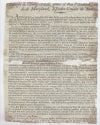
![Prospectus [1809]](/sites/default/files/Prospectus_1809_thumb.jpg)


![Prospectus of 182[0], page 1](/sites/default/files/Prospectus_1820_1_thumb.jpg)
![Prospectus of 182[0], page 2](/sites/default/files/Prospectus_1820_2_thumb.jpg)
![Prospectus of 182[0], French version, page 1](/sites/default/files/Prospectus_1820_french_1_thumb.jpg)
![Prospectus of 182[0], French version, page 2](/sites/default/files/Prospectus_1820_french_2_thumb.jpg)
![Prospectus [1825]](/sites/default/files/Prospectus_1825_0_thumb.jpg)
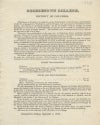
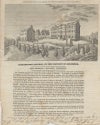

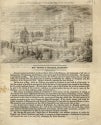
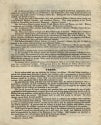
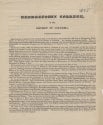
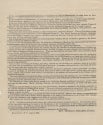
![Prospectus [September 14, 1839], page 1](/sites/default/files/Prospectus_1839_1_thumb.jpg)
![Prospectus [September 14, 1839], page 2](/sites/default/files/Prospectus_1839_2_0_thumb.jpg)
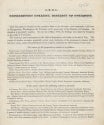
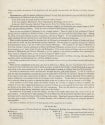
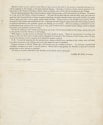
![Prospectus of [August] 1848, page 1](/sites/default/files/Prospectus_1848_1_thumb.jpg)
![Prospectus of [August] 1848, page 2](/sites/default/files/Prospectus_1848_2_thumb.jpg)
![Prospectus of [August] 1848, blank third page with handwritten note](/sites/default/files/Prospectus_1848_cover%20letter_thumb.jpg)
![Prospectus of [August] 1848, blank fourth page with address and postmark](/sites/default/files/Prospectus_1848_address_thumb.jpg)